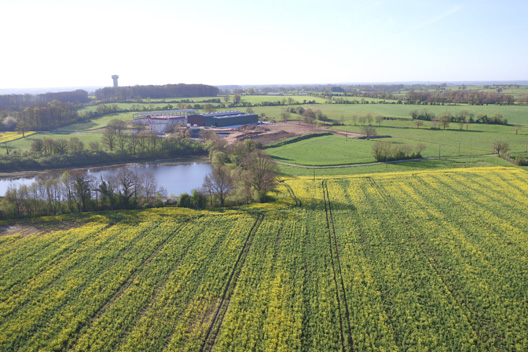Commitment to climate goals

Climate change is one of our greatest and most urgent global challenges that must be addressed. Southern California Gas Co. (SoCalGas), Énergir, GRDF and GRTgaz, gas infrastructure sector leaders in California, Quebec and France, respectively, have collaborated for over two years on viable solutions and associated technologies to leverage the potential of gas grids to support the energy transition. A key objective has been to facilitate renewable gas production and injection into gas networks. These four energy leaders believe that renewable gas offers solutions to meet enhanced climate targets from short to long-term. They are committed to advancing natural gas sector decarbonization and supporting cost-effective, strategic development of renewable gas in their respective countries.
A shared commitment to achieve natural gas sector decarbonization in an integrated approach
Developing renewable gases (RG) is essential to advancing the energy sector decarbonization. That's the conclusion of the International Energy Agency in its April 2020 “Outlook for biogas and biomethane” . Renewable gases and gas grids offer key solutions for the energy sector, the environment, and the global economy.
To achieve decarbonization, in a cost-effective way, the four energy leaders seek to:
- Facilitate the development and use of RG, including biomethane and hydrogen , leveraging existing local production where feasible.
- Leverage the potential of gas grids as an enabler of the energy transition in a unified, cross-continental approach to achieve climate-neutrality.
In a position paper, they present this common vision of a holistic approach of the future of the energy system, and their recommendations. They advocate for a global and integrated approach to decarbonization, characterized by gas grids transporting renewable gases, electricity grids transporting renewable electricity, and both these grids being increasingly interconnected. Gas grids can provide long term/seasonal energy storage and deliver renewable gases to meet the energy demands of end users, resulting in the efficient decarbonization of all economic sectors.
Conclusion & recommendations
In this guidance document SoCalGas, Énergir, GRDF and GRTgaz recommend:
- Promoting a global approach in energy system planning by leveraging existing gas grids with sector coupling solutions.
- Identifying and implementing policy and regulatory changes needed to ensure gas infrastructure can be maintained and developed to continue to support the energy transition and energy system resilience.
- Considering conventional natural gas and renewable gases, including hydrogen, solutions for mobility (transportation sector) as equitable pathways alongside low-carbon battery-electric solutions, based on the adoption of a Life Cycle Assessment methodology and available technology.
- Ensuring social recognition and acceptance that natural gas vehicles (NGVs), Bio-NGVs, and FCEVs (Fuel cell electric vehicles) are viable alternatives to conventionally fueled vehicles through continued public education efforts and targeted communications.
- Integrating conventional gas and renewable gases in road, rail and marine transportation in forthcoming sustainable transportation planning.